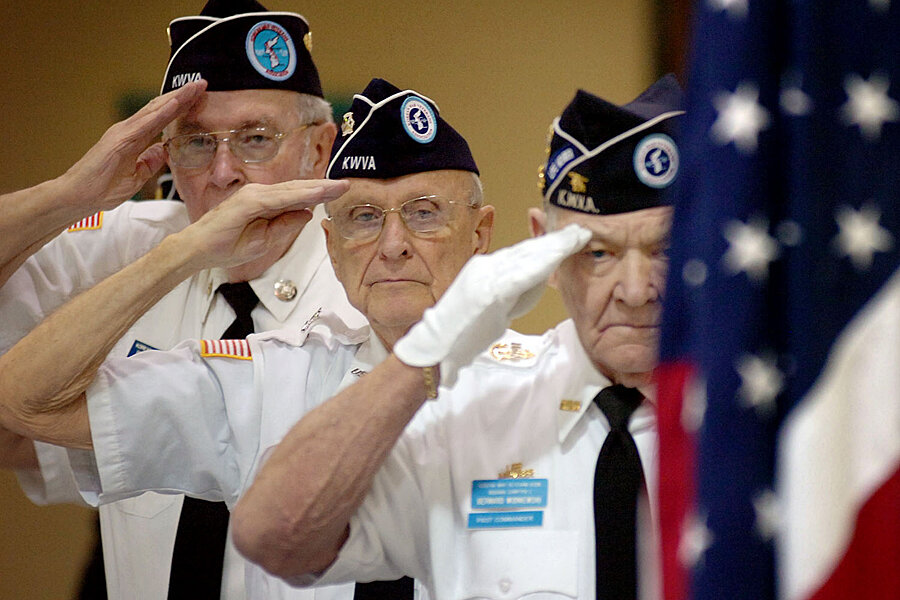VA reduced benefits backlog, but needs to get back in gear, say veterans
Loading...
Despite having made good progress to reduce a backlog of disability claims that peaked last March, the Department of Veterans Affairs’ efforts have lost momentum in recent months, according to a new report from Iraq and Afghanistan Veterans of America (IAVA).
That progress had been particularly helpful – and necessary – given that in March 2013 the backlog had grown to more than 600,000 claims.
In the months that followed, the backlog, which the Department of Veterans Affairs (VA) defines as all claims that have been in the system for more than 125 days, had decreased by 37 percent.
But since November the backlog of disability claims has hovered at around 400,000, which still represents more than 50 percent of the claims waiting to be processed at the Department of Veterans Affairs (VA).
“The VA has made progress since March to reform the system and bring the numbers down, but 400,000 veterans are still waiting and much work remains left to be done,” said Jacqueline Maffucci, research director for the IAVA.
The VA last year processed as many as 10,000 to 12,000 claims per month, “which is outstanding,” says Tom Tarantino, IAVA’s chief policy officer.
Much of this progress came during a period when the VA required its employees to work overtime. For much of last year, claims processors had to put in at least 20 hours of overtime each month.
But in late November, VA Secretary Eric Shinseki suspended this requirement for two months. The VA then said that it would monitor the impact of the overtime freeze.
“I’ve just got to be smart to get the workforce to continue to sustain the kind of performance they’ve had in the last 230 days,” Secretary Shinseki said at the time, adding that he was worried about the diminishing returns of the policy.
The government shutdown in October also stalled the progress that the VA had been making. While in fiscal year 2013 the VA processed more claims than veterans filed for the first time in five years, it still processed 100,000 fewer claims than it expected.
Now, the VA needs to take a close look at how policies like mandatory overtime impacted the backlog, Dr. Maffucci says.
“I don’t think we have a sense of what the VA’s true production capacity is,” Mr. Tarantino adds. “We don’t know how they measure production.”
This, he adds, “is this huge hole in terms of transparency and data in the VA.”
Much of VA’s success in ending its backlog also hinges on the development of an automated system, rather than using stacks of paper files.
“When based in paper, VA employees have to move a physical file to each person or office that needs to handle the claim,” the IAVA report notes. As of December 2013, nearly 75 percent of all current claims have been digitized.
That said, in many cases the automation still does not include word-searchable documents, but rather scanned PDF files that are not searchable by words. In those cases, it can take longer to go through the files electronically than it does to go through them manually, some veterans advocacy groups point out.
What this all means is that the VA must establish mechanisms to measure the effectiveness of each of the initiatives it’s putting into place,
“Overall it must create an infrastructure that allows the disability compensation system to project future needs and adapt to a growing population of new veterans and even more complex injuries,” the IAVA report notes.
While the VA may indeed reach its goal of ending the backlog in fiscal year 2015 – thanks to Shinseki being “incredibly proactive,” Tarantino said, in implementing many VA initiatives – veterans claims will continue to pour in for years to come.
“We’re pulling the car out of the ditch,” he added. “Now we have to make sure we get it back on the road.”





